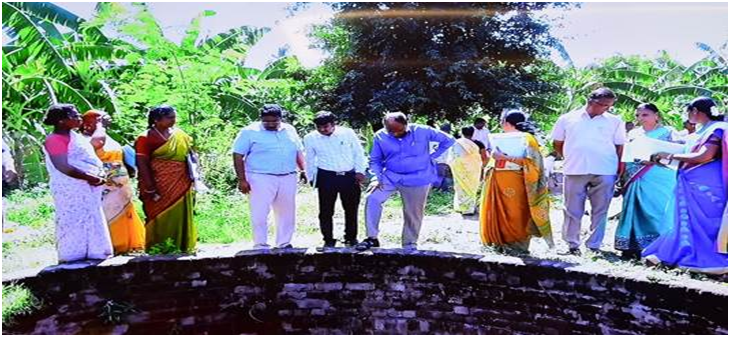C-DOT and IIT, Delhi sign an MoU for cooperation in various emerging areas of Telecom (GS Paper 3, Science and Tech)

Why in news?
- Recently, the Centre for Development of Telematics (C-DOT) and the Indian Institute of Technology, Delhi (IITD) have signed a Memorandum of Understanding (MoU) for cooperation in various areas of Telecom spanning IoT/M2M, AI/ML, Cyber Security and 5G & Beyond technologies.
C-DOT:
- C-DOT has been a pioneer in the field of Telecom since its inception in 1984.
- C-DOT has undertaken several cutting-edge R&D endeavours leading to the creation of a diverse product portfolio covering a wide array of technologies in the domains of Optical, Switching, Wireless, Security, Network Management and innovative Telecom Software applications.
- C-DOT has been instrumental in the development of home-grown 4G & 5G systems in collaboration with local industry, academia and startups.
Key Highlights:
- This MoU aims to evolve a mutually productive framework for collaboration between R&D and academia to spur the design & development of wholly indigenous Telecom solutions.
- This will be an effective platform for exchange of knowledge and skill amongst students, faculty and researchers right from the stage of ideation and conceptualization.
- The platform would act as a catalyst to further the transition of novel ideas into market-ready solutions.
Way Forward:
- This MoU will lead to the generation of novel use-cases and futuristic Telecom solutions for wider deployment across a large volume of end-users.
DRDO Flight Tests VSHORADS Missile
(GS Paper 3, Science and Tech)
Why in news?
- Recently, the Defence Research and Development Organisation (DRDO) successfully flight tested the Very Short Range Air Defence System (VSHORADS) missile in Chandipur off the coast of Odisha.
What is VSHORADS?
- VSHORADS is a Man Portable Air Defence System (MANPAD) designed and developed indigenously by DRDO’s Research Centre Imarat (RCI), Hyderabad in collaboration with other DRDO laboratories and Indian Industry Partners.
- VSHORADS missile incorporates many novel technologies including miniaturized Reaction Control System (RCS) and integrated avionics, which have been successfully proven during the tests.
- The missile is propelled by a dual thrust solid motor and is intended to counter low-altitude aerial threats at short ranges.

Outcome:
- Very Short Range Air Defence Missiles are critical for defending any major city or strategically important location.
- The design of the missile including launcher has been highly optimized to ensure easy portability.
- Both the flight tests have completely met the mission objectives.
Way Forward:
- This new missile equipped with modern technologies will give further technological boost to the Armed Forces.
Asha Parekh to be honoured with DadasahebPhalke Award, 2020
(Miscellaneous)
Why in news?
- Recently, the Ministry of Information and Broadcasting announced that the52nd DadasahebPhalke Award for the year 2020 will be accorded to legendary actress Ms Asha Parekh.
About Asha Parekh:
- Asha Parekh is a renowned film actress, director and producer and an accomplished Indian classical dancer.
- Starting her career as a child actor she made her debut as lead heroine in Dil Deke Dekho and has gone on to act in over 95 movies.
- She has acted in celebrated films like Kati Patang, TeesriManzil, Love in Tokyo, AyaSaawanJhoomKe, Aan Milo Sajna, MeraGaonMeraDesh.
- She was conferred the Padma Shri in 1992. She has also served as the head of Central Board for Film Certification from 1998-2001.

About DadasahebPhalke Award:
- The DadasahebPhalke Award is India's highest award in the field of cinema.
- It is presented annually since 1969 at the National Film Awards ceremony by the Directorate of Film Festivals, an organisation set up by the Ministry of Information and Broadcasting.
- The award comprises a Swarna Kamal (Golden Lotus) medallion, a shawl, and a cash prize of ₹1,000,000.
- It is given in the memory of DadasahebPhalke, who is regarded as the ‘father of Indian cinema’, having made the first Hindi movie, Raja Harishchandra.
- In 2019, it was awarded to Rajinikanth.
JALDOOT App launched
(GS Paper 2, Governance)
Why in news?
- Recently, the Union Minister of State for Rural Development launched the “JALDOOT App and JALDOOT App e-brochure” at New Delhi.
Stakeholders:
- JALDOOT app has been jointly developed by Ministry of Rural Development and Panchayati Raj.
What is the purpose of JALDOOT App?
- This app will be used across the country to capture the water level of selected 2-3 wells in a village.
- Manual monitoring of water levels in open wells will be measured twice in a year, from 1st May to 31st May as pre-monsoon water level and from 1st October to 31st October for post-monsoon level for the same well.
- Jaldoots, that is, officers assigned to measure the water levels, should also upload the geo-tagged photographs through the app on every occasion of measurement.
How it will work?
- This Mobile app will work in both online and offline mode. So water level can be captured even without internet connectivity and captured date will be stored in mobile and when mobile comes in the connectivity area, data will synchronize with the central server.
- The regular data to be input by the Jaldoots would be integrated with the database of National Water Informatics Centre (NWIC), which can be utilised for analysis and display of various useful reports for the benefit of various stakeholders.
- Water level report, Monsoon Report and Registered user report are available at JALDOOT web portal.

Way Forward:
- With the newly launched app, the State Government/UTs and gram panchayats should involve themselves towards systematically collecting ground water level data and assimilation of the same in the central digital database for analysis.
- Despite promoting watershed development, afforestation, waterbody development and renovation, rainwater harvesting like initiatives, the ground water level in various parts of the country has depleted.
- This app will facilitate in observing water tables across the country and the resulting data can be utilised for Gram Panchayat Development Plan and Mahatma Gandhi NREGA Plans.
Bihar government promoted Surjapuri and Bajjika dialects
(GS Paper 2, Governance)
Why in news?
- With the aim to revitalise Bihar’s local languages and indigenous culture, the State government has directed the state education department to erect two new academies for the promotion of the Surjapuri and Bajjika dialects.
- The Bihar education department will also set up an umbrella organisation that will keep track of the progress of all languages and dialects spoken in the state.
What are Surjapuri and Bajjika dialects?
- The language is prevalent in Kishanganj and some areas of Seemanchal in northeastern Bihar such as the districts of Katihar, Purnia and Araria.
- The language is mostly spoken by Surjapuri Muslims residing in Kishanganj, the district with around 70 per cent Muslim population. However, the language has no specific connection to religion.
- Surjapuri and another regional dialect Tharu, spoken in Bihar, and some regions of Uttar Pradesh and Uttarakhand will become extinct if they are not restored as people now prefer conversing in dominant languages like Bhojpuri, Maithili, Bangla and Hindi.
- Similar to Maithili, Bajjikais mostly spoken in northwest Bihar including Muzaffarpur, Vaishali, West Champaran, Sheohar and parts of Samastipur.

Bihar’s eight language academies:
- The two new academies for Bajjika and Surjapuri will be set up akin to the already existing eight language centres, which include Bihar Hindi Granth Academy, Maithili Academy, Magahi Academy, Bangla Academy, Sanskrit Academy, Bhojpuri Academy, Angika Academy and South Indian languages organisation.
Way Forward:
- The reason to introduce language academies for Bajjika and Surjapuri is to popularise their literature and to push for more research in these dialects.
- The planned umbrella body for Bihar’s languages will provide a platform for intellectuals like academics, litterateurs, and others to collaborate for promoting literary work and upgrading the grammar and dictionaries of these dialects.






